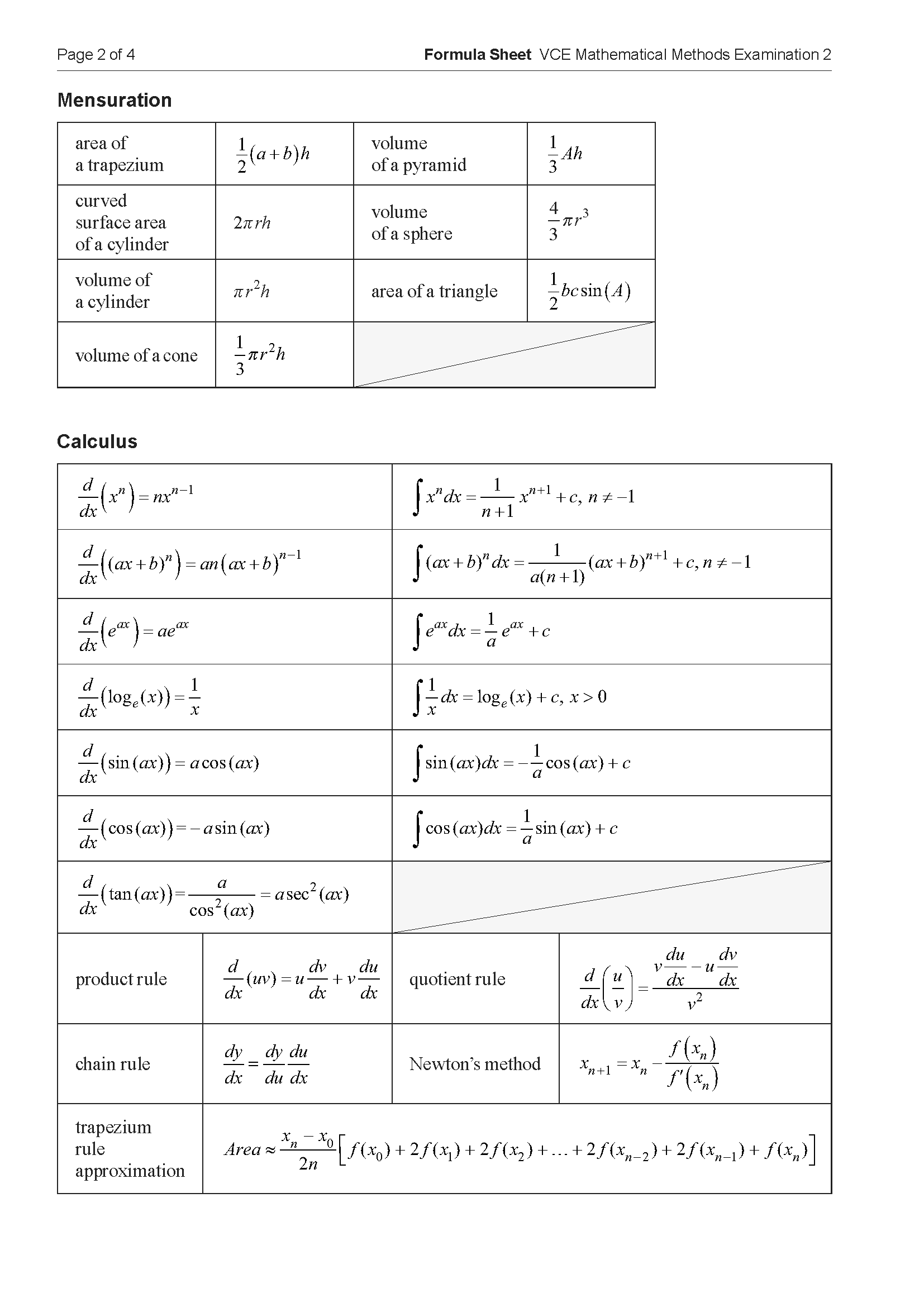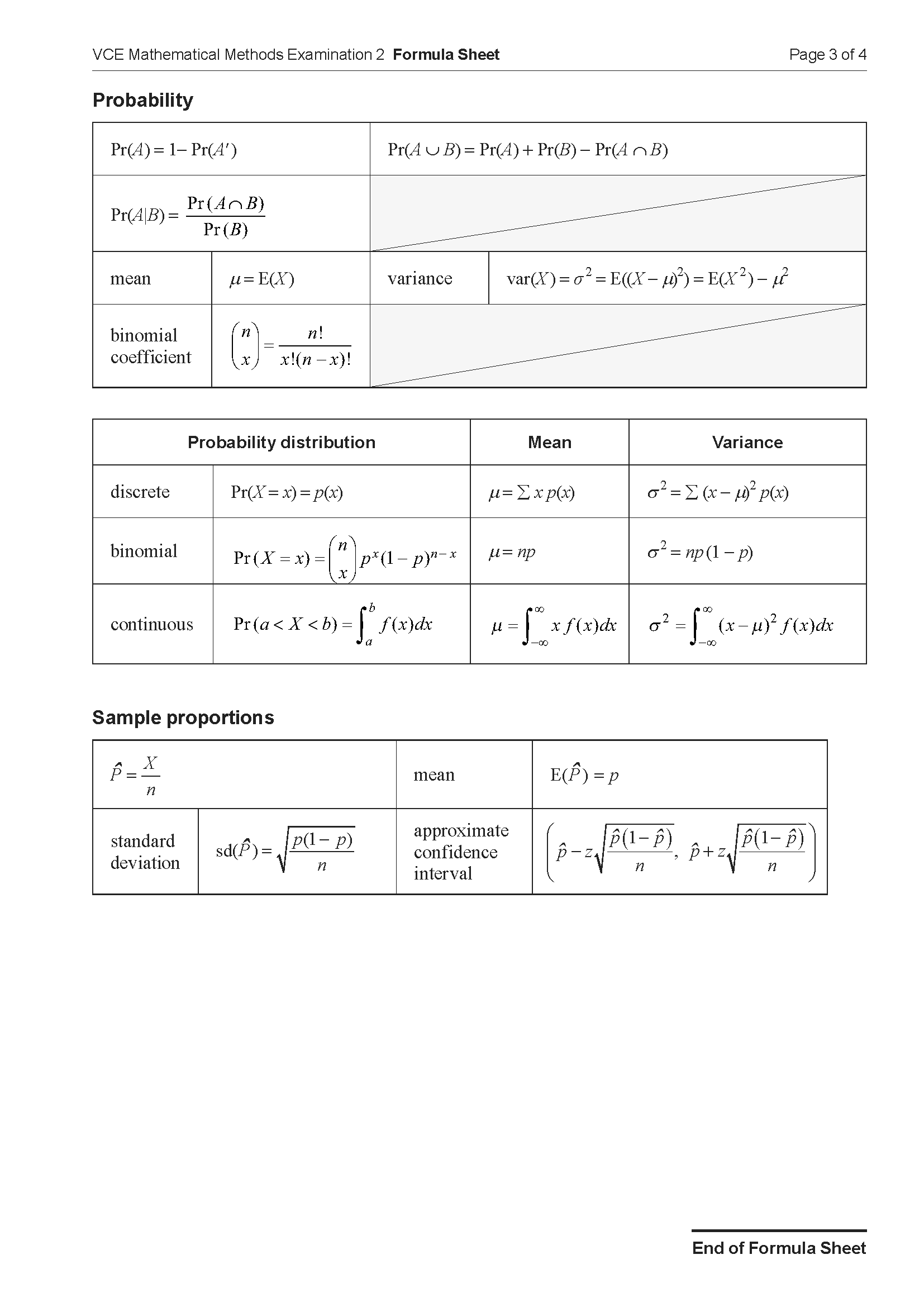VCE Maths Methods Basic Probability Mini Test 1
Number of marks: 10
Reading time: 2 minutes
Writing time: 15 minutes
Section A – Calculator Allowed
Instructions
• Answer all questions in pencil on your Multiple-Choice Answer Sheet.
• Choose the response that is correct for the question.
• A correct answer scores 1; an incorrect answer scores 0.
• Marks will not be deducted for incorrect answers.
• No marks will be given if more than one answer is completed for any question.
• Unless otherwise indicated, the diagrams in this book are not drawn to scale.
A fair six-sided die is repeatedly rolled. What is the minimum number of rolls required so that the probability of rolling a six at least once is greater than 0.95?
- A. 15
- B. 16
- C. 17
- D. 18
At a Year 12 formal, 45% of the students travelled to the event in a hired limousine, while the remaining 55% were driven by a parent.
Of the students who travelled in a hired limousine, 30% had a professional photo taken.
Of the students who were driven by a parent, 60% had a professional photo taken.
Given that a student had a professional photo taken, what is the probability that the student travelled in a hired limousine?
- A. \(\frac{1}{8}\)
- B. \(\frac{27}{200}\)
- C. \(\frac{9}{31}\)
- D. \(\frac{22}{31}\)
Twelve students sit in a classroom, with seven students in the first row and five in the second row. Three students are chosen randomly from the class.
The probability that exactly two of the three students chosen are in the first row is
- A. \(\frac{7}{44}\)
- B. \(\frac{21}{44}\)
- C. \(\frac{5}{22}\)
- D. \(\frac{245}{576}\)
Two events, \(A\) and \(B\), are independent, where \(\Pr(B) = 2\Pr(A)\) and \(\Pr(A \cup B) = 0.52\)
\(\Pr(A)\) is equal to
- A. \(0.1\)
- B. \(0.2\)
- C. \(0.3\)
- D. \(0.4\)
- E. \(0.5\)
End of Section A
Section B – No Calculator
Instructions
• Answer all questions in the spaces provided.
• Write your responses in English.
• In questions where a numerical answer is required, an exact value must be given unless otherwise specified.
• In questions where more than one mark is available, appropriate working must be shown.
• Unless otherwise indicated, the diagrams in this book are not drawn to scale.
A car manufacturer is reviewing the performance of its car model X. It is known that at any given six-month service, the probability of model X requiring an oil change is \(\frac{17}{20}\), the probability of model X requiring an air filter change is \(\frac{3}{20}\) and the probability of model X requiring both is \(\frac{1}{20}\).
a. State the probability that at any given six-month service model X will require an air filter change without an oil change. 1 mark
b. The car manufacturer is developing a new model, Y. The production goals are that the probability of model Y requiring an oil change at any given six-month service will be \(\frac{m}{m+n}\), the probability of model Y requiring an air filter change will be \(\frac{n}{m+n}\) and the probability of model Y requiring both will be \(\frac{1}{m+n}\), where \(m, n \in Z^+\).
Determine \(m\) in terms of \(n\) if the probability of model Y requiring an air filter change without an oil change at any given six-month service is 0.05. 2 marks
The only possible outcomes when a coin is tossed are a head or a tail. When an unbiased coin is tossed, the probability of tossing a head is the same as the probability of tossing a tail.
Jo has three coins in her pocket; two are unbiased and one is biased. When the biased coin is tossed, the probability of tossing a head is \(\frac{1}{3}\).
Jo randomly selects a coin from her pocket and tosses it.
a. Find the probability that she tosses a head. 2 marks
b. Find the probability that she selected an unbiased coin, given that she tossed a head. 1 mark
End of examination questions
VCE is a registered trademark of the VCAA. The VCAA does not endorse or make any warranties regarding this study resource. Past VCE exams and related content can be accessed directly at www.vcaa.vic.edu.au

